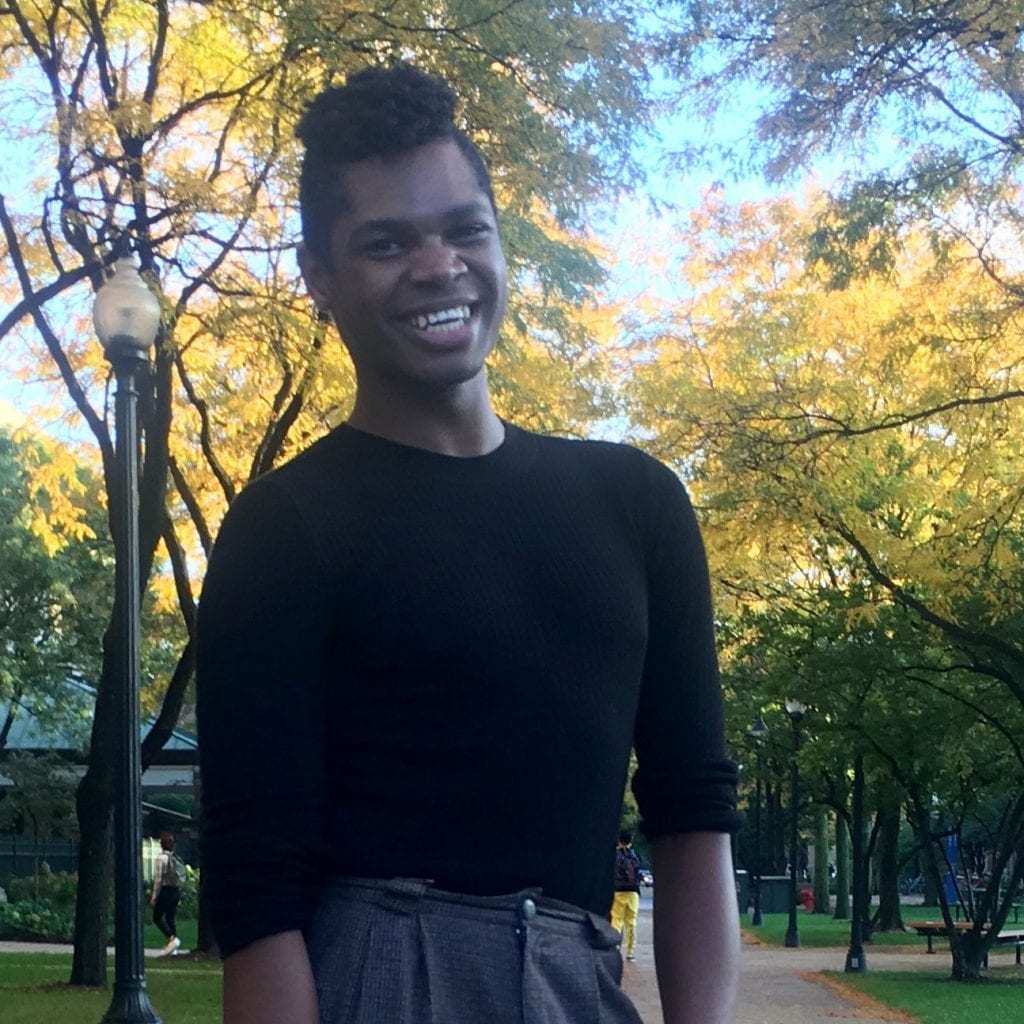We got to talk with recent History of Art and Architecture graduate Omar Dyette.
Check out what he’s up to below!
Where are you from?
Originally from New Jersey, with detours in North Carolina, Georgia, Wisconsin and Ohio before moving to Chicago 5 years ago.
What year did you graduate from DePaul?
2018
Why did you choose to go to DePaul?
I chose DePaul for the Art History program, because it seemed more well-rounded than other schools I was applying to. On top of that, the number of people I met from DePaul reassured me that there would be a strong network of alumni once I graduated.
Did you have any other majors or minors?
I also minored in Media and Cinema Studies in the College of Communication.
What attracted you to HAA?
I fell in love with art history by visiting the Art Institute after moving to Chicago. From there, I discovered that HAA would be the program to give me not only a strong foundation in the field but also the contacts and networking skills to build a career post-graduation. On top of that, I saw options for non-Western art history courses that I couldn’t find at other institutions.
What are your major interests in art and architectural history?
My practice draws heavily from the tradition of African diasporic art movements, with a focus on archiving and preserving records of community-engaged art and performance from the past and present. I am currently moving and reading through the aesthetic conditions that fed into the twin births of house/ball culture and hip-hop culture. This is an extension of work I did while at DePaul related to the role of graffiti in political activism.
Do you have any favorite classes or HAA faculty?
Top 3 faculty (in no particular order): Mark DeLancey, Lisa Mahoney, Susan Solway
What are you doing post-graduation?
A lot (but that’s always been the case). I am currently the Curatorial Assistant with Free Write Arts & Literacy and I work as a barista at Steppenwolf Theatre Company (the hustle doesn’t end when you graduate). I am also developing a performance and multimedia art project that straddles the axis of joy and pain intrinsic in the experience of the Black queer sight/body.
Can you tell us about your current position? What do you do? How did you start to work there?
Free Write Arts & Literacy engages incarcerated and court-involved youth and young adults in the performing, visual, and literary arts so that they become the narrators of their own stories and the authors of their futures. As Curatorial Assistant, I am organizing an upcoming exhibition entitled In Conversation. This show combines work from students in Cook County Juvenile Temporary Detention Center with response pieces by over 30 internationally recognized artists. The exhibition opens on june 14th at Chicago Art Department in Pilsen, and will be supported by Free Write’s first fundraising benefit MoneyBall on June 22nd.
I met Free Write’s Lead Curator, Chelsea Ross, in 2017 while I was working with Threewalls, a space for community and artist-focused programming in Humboldt Park. We activated her as a selection committee member for the performance series In Session, a spin on the traditional lecture that combines conversation with performance for transformative results. Chelsea reached out in March to see if I was interested in working on In Conversation, and I jumped at the chance to amplify the stories of individuals impacted by the carceral justice system.
How did the HAA major prepare you for your chosen profession and post-undergraduate life?
The research and presentation skills I cultivated through the HAA major have been indispensable since leaving school. HAA is a writing-heavy program, and the required time management alongside that forced me to prioritize deadlines and find the most effective ways to absorb information. All of these skills have helped me not only with my curatorial practice, but with interpersonal relationships as well.
